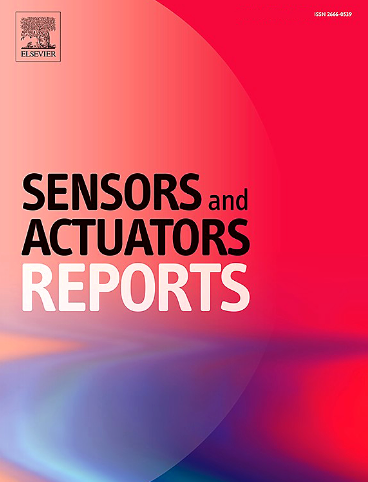Cortisol detection using a Long Period Fiber Grating Immunosensor coated with Graphene Oxide
IF 6.5
Q1 BIOTECHNOLOGY & APPLIED MICROBIOLOGY
引用次数: 0
Abstract
Recirculating Aquaculture Systems (RAS) have revolutionized the protein production sector in aquaculture, leading to significant growth and expansion of the industry. Despite the success of RAS in aquaculture, there are challenges related to stress in fish raised in these systems, which can impact their food intake, growth, and overall well-being. One of the major limitations in the aquaculture industry is the lack of smart sensors for real-time detection of stress hormones like cortisol, hindering our ability to understand and effectively manage the welfare of fish in these systems. In this work, a graphene oxide (GO) coated long period grating (LPG) was fabricated into a double-clad optical fiber (DCF) with W-shaped refractive index profile. The working point of the device was tuned to the mode transition region to enhance its sensitivity against outer medium changes. It was further integrated into a microfluidic system and the fiber surface was functionalized with specific anti-cortisol antibodies for the detection of cortisol. Finally, the performance of this immunosensor was evaluated for a cortisol concentration range of 0.01 ng/mL to 100 ng/mL, a wide working range of concentrations of relevant interest, achieving a limit of detection (LOD) of 0.06 ng/mL. Moreover, a selectivity test using testosterone and glucose as interfering substances was carried out.

用氧化石墨烯涂层的长周期光纤光栅免疫传感器检测皮质醇
循环水产养殖系统(RAS)彻底改变了水产养殖中的蛋白质生产部门,导致了该行业的显著增长和扩大。尽管RAS在水产养殖中取得了成功,但在这些系统中饲养的鱼类面临着与压力有关的挑战,这可能影响它们的食物摄入、生长和整体健康。水产养殖业的主要限制之一是缺乏智能传感器来实时检测皮质醇等应激激素,这阻碍了我们了解和有效管理这些系统中鱼类福利的能力。在这项工作中,将氧化石墨烯(GO)涂层长周期光栅(LPG)制成具有w形折射率的双包层光纤(DCF)。将器件的工作点调谐到模态过渡区,以提高其对外部介质变化的灵敏度。它进一步集成到微流控系统中,纤维表面被特异性抗皮质醇抗体功能化,用于检测皮质醇。最后,对该免疫传感器的性能进行了评估,皮质醇浓度范围为0.01 ng/mL至100 ng/mL,相关兴趣浓度的工作范围很广,检测限(LOD)为0.06 ng/mL。此外,以睾酮和葡萄糖为干扰物进行了选择性试验。
本文章由计算机程序翻译,如有差异,请以英文原文为准。
求助全文
约1分钟内获得全文
求助全文
来源期刊

Sensors and Actuators Reports
Multiple-
CiteScore
9.60
自引率
0.00%
发文量
60
审稿时长
49 days
期刊介绍:
Sensors and Actuators Reports is a peer-reviewed open access journal launched out from the Sensors and Actuators journal family. Sensors and Actuators Reports is dedicated to publishing new and original works in the field of all type of sensors and actuators, including bio-, chemical-, physical-, and nano- sensors and actuators, which demonstrates significant progress beyond the current state of the art. The journal regularly publishes original research papers, reviews, and short communications.
For research papers and short communications, the journal aims to publish the new and original work supported by experimental results and as such purely theoretical works are not accepted.
 求助内容:
求助内容: 应助结果提醒方式:
应助结果提醒方式:


